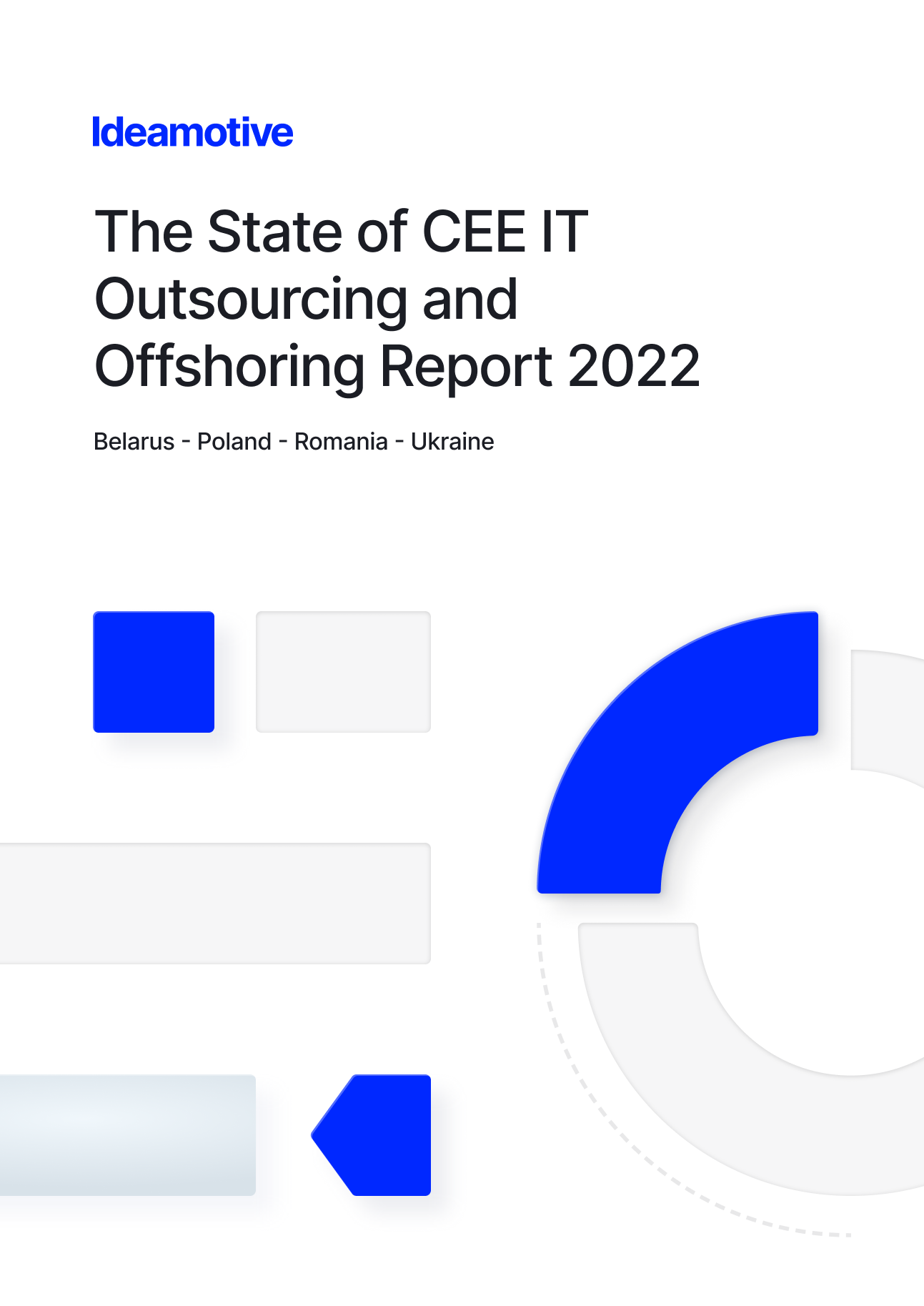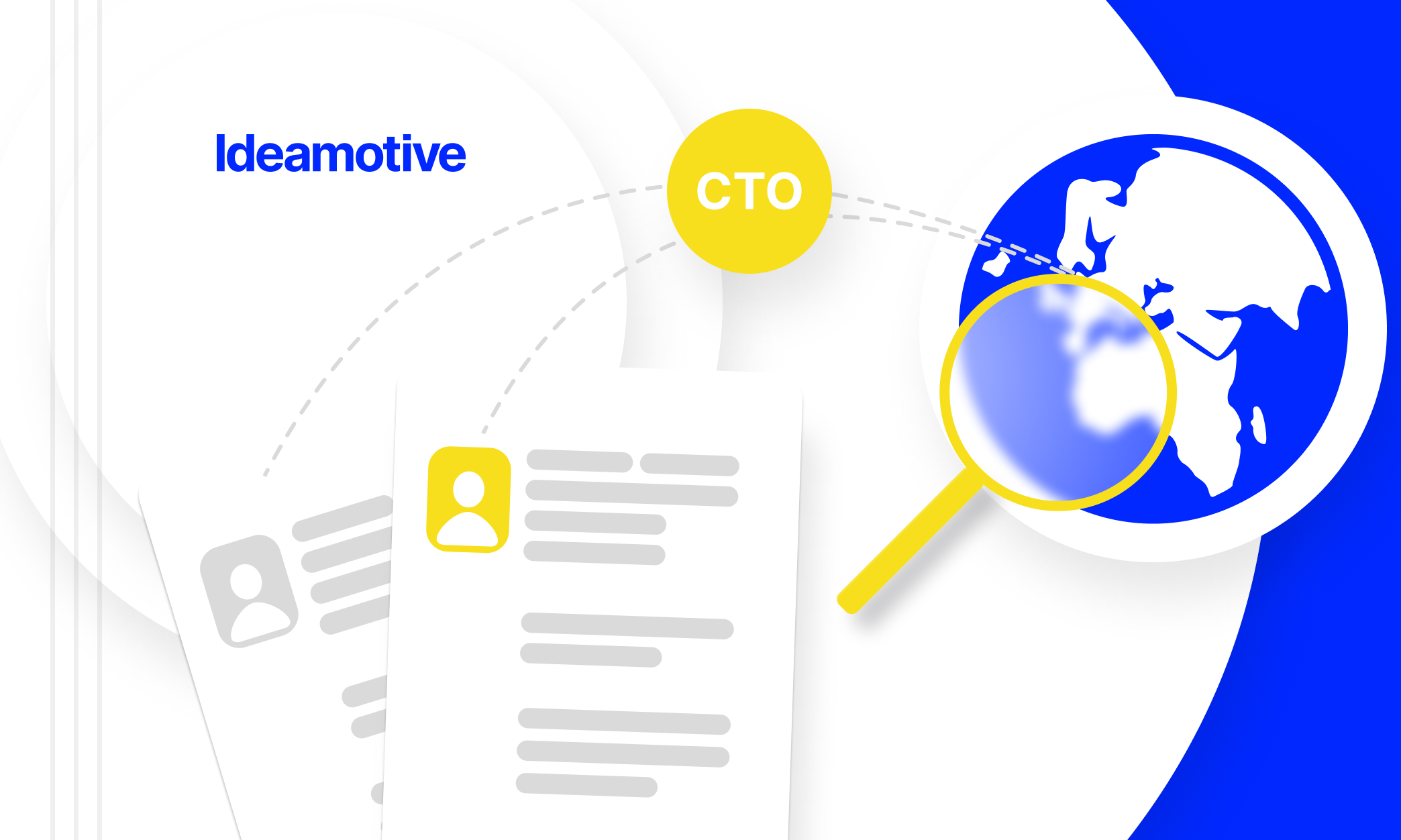How Staff Augmentation Can Help with Project Scalability in Software Development
Mar 22, 202321 min read

Michał Pruciak
Michał is a highly skilled Business Development Manager with a passion for the intersection of medical technology and cutting-edge technology. When he's not working, Michał can often be found enjoying a good movie or hitting the trails for a hike.

The software development industry is a global industry growing in leaps and bounds daily, so the demand for skilled talent is constantly rising. However, many organizations struggle to hire and keep skilled workers, delaying project timeframes and corporate goals. I believe the route of software development staff augmentation will help businesses fill skill gaps and complete critical tasks through development outsourcing.
According to Brookings Institution, there's been a rise in the growing skills gap, making it difficult for organizations to hire skilled professionals in the software development industry. This wide skill gap has led to the increased popularity of staff augmentation. Nowadays, many organizations are using this strategy to fill the gaps in their workforce.
Staff augmentation is an IT staffing model that allows businesses to add skilled professionals to their teams. It fills skill gaps, increases flexibility, and improves deliverables. The software industry is dynamic and fast-growing; consequently, the requirements for projects and technology are continually changing. And software development projects' success hinges on having a knowledgeable, flexible staff that can adjust to changing conditions.
The outcome of implementing software development staff augmentation is that companies can address the constantly changing needs of their industry via flexible, cost-effective, and scalable staff augmentation.
In this article, I will share my understanding of how staff augmentation bridges skill gaps and improve the software industry's quality of deliverables. Read on.
The Increasing Popularity of Staff Augmentation
We can trace the increased popularity of Staff Augmentation to the pandemic and how we had to adapt to continue living in the new normal. Businesses are still recovering from the effect COVID-19 had on how we work. It drastically altered our lives and pushed companies to speed up their competitive rates.
The change caused by the pandemic has led to the rise of staff augmentation. A staffing model that allows businesses to handle their staffing solutions effectively by expanding their teams with either remote workers short-term or long-term.
After COVID-19 forced companies to look to staff augmentation as a means to stay afloat, businesses began to notice and experience its other benefits. Awareness of its benefits and how it can support organizations have contributed to the ever-increasing popularity of software development staff augmentation. As a result, one of the reasons why staff augmentation is popular is its suitability for a hybrid work environment. Businesses partner with staff augmentation service providers to bridge talent gaps and meet deadlines faster. This model allows for the support of internal teams and ensures flexibility, affordability, and quality.
Also, the low risk associated with staff augmentation is another reason for its increasing popularity. Compared to other development outsourcing models, the risks involved with staff augmentation services are minimal due to constant collaboration with the internal teams. The augmented team operates either under the supervision of in-house managers or as an extension of the internal teams. The seamless integration and uninterrupted collaboration of both teams eliminate any possibility of errors.
In addition, software development staff augmentation can help alleviate the skills gap many companies face. With the increasing race toward digitalization, it can be difficult for companies to keep up with the latest trends and technologies.
It is more flexible to scale a company with staff augmentation without compromising sustainability. As the world started experiencing a recession, most companies either cut-down spending on scaling and hiring by significant margins or stopped altogether.
However, with IT staffing and resource augmentation services becoming mainstream, businesses can fuel their desires to achieve exponential growth and scalability without worrying about laying off permanent employees or (in the worst case scenario) signing up for bankruptcy.
Now let's see how employing the staff augmentation strategy from Ideamotive offers your company so many advantages. Here are some of the pros below:
- Faster than hiring, we provide access to top-notch and well-vetted professionals without the lengthy recruitment process.
- It is cheaper than recruiting because it eliminates the need for advertising, interviewing, and training.
- The process is straightforward and stress-free for you, without going back and forth with invoices and contracts. All that is required is a single-click agreement and one invoice.
- Being able to offer ready talent in 48 hours makes it an efficient way to fill temporary or urgent positions in your company.
- We have a money-back guarantee, so if you are not pleased with our services for any reason, this is to assure you of our quality services and the excellent way we go about our business.
- Our staff augmentation services make it easier for companies to cherry-pick top developers best suited for their needs.
- It eliminates the risk of hiring unsuitable candidates and minimizes the possibility of costly mistakes.
Examples of companies using staff augmentation
Many industries use software development staff augmentation for team expansion, including fintech, Medtech, e-commerce, and software development. Using this model allows them to fill specific skill gaps, manage spikes in demand, and reduce overhead costs. From my years of experience helping to grow tech teams for companies of varying sizes, I believe all industries can benefit from staff augmentation.
For instance, Ideamotive has provided staff augmentation services to clients across different industries, including Memcare, Luminate Enterprise, DHL, Rierra INC, etc.
When should you consider using Software Development Staff Augmentation?
I know staff augmentation to be a practical approach that can help organizations in various situations. Here are some instances when you should consider implementing staff augmentation in your company:
1. Scaling up during peak periods
Many organizations experience peak periods requiring additional staff to handle an increased workload. Staff augmentation can help organizations quickly and efficiently scale up their workforce during these periods without needing permanent hires.
2. Short-term projects
When the projects are short-term, hiring permanent staff might not be financially responsible. Staff augmentation allows organizations to hire temporary workers with the specific skills and experience required for the project without incurring long-term staffing costs.
3. Specialized skill requirements
Sometimes, organizations require specialized skills that are not available in-house. Staff augmentation can help organizations quickly find and hire workers with the specific skills required for the project without the need for extensive recruitment efforts.
4. Cost optimization
Staff augmentation can help organizations optimize costs by reducing overheads such as office space, tools, equipment, and licenses. In addition, staff augmentation can eliminate the need for costly recruitment processes, including recruiter search, interviews, and onboarding.
5. Testing new talent
Staff augmentation can help test new talent before making permanent hires. Organizations can hire temporary workers to test their skills and cultural fit, providing the organization with the opportunity to evaluate the worker's performance before committing to a permanent hire.
Benefits of Using Staff Augmentation
Staff augmentation involves bringing in external professionals to work alongside existing teams for a specific period, providing many benefits for businesses. I will outline some of the key benefits that I have seen several companies attest to below:
1. Cost-Effective Solution
Hiring permanent staff can be expensive, especially if you only need them temporarily. Staff augmentation allows you to engage professionals temporarily without the long-term costs of a permanent hire. This approach can be more cost-effective than hiring full-time staff and enable you to access top-tier talent without breaking the bank.
2. Hire Experienced Professionals
Augmenting your team with experienced professionals can help you confidently assign projects and tasks. Mid-career professionals have a wealth of experience and expertise and can quickly understand the requirements of a project. Their already-acquired knowledge reduces the need for extensive training, saving your company time and money.
3. Flexibility
The flexibility that staff augmentation provides is one of its key advantages. It makes short-term employment possible for businesses, and you only pay for the hours spent working on your project. Doing this can lower your labor costs and eliminate idle time for your employees.
Staff augmentation also allows you to scale up or down as needed, which is useful when you have projects of varying sizes and scopes. The ability to scale up or down using this strategy is precious for businesses that experience seasonal fluctuations or require additional support for specific projects.
4. Target Skills
With staff augmentation, you can target the most needed skills. You don't have to worry about hiring someone who might not have the right expertise for the job. Instead, you can choose the right person with your desired skill set. This approach ensures that you have the right people on board to deliver high-quality work.
5. Enhanced Efficiency
By using staff augmentation, companies can quickly fill skill gaps and improve the efficiency of their workforce. The professionals hired through staff augmentation are typically experienced and have the necessary skills to work independently or as part of a team. They can quickly adapt to the company's existing workflows and contribute to the project from day one.
6. Risk Reduction
Hiring full-time employees carry a certain degree of risk for businesses. There is always the possibility that the new employee may not be a good fit or may not perform as expected. Staff augmentation reduces this risk by providing companies with a pre-screened pool of properly vetted professionals. Consequently, it eliminates the risk of hiring mistakes and allows organizations to focus on their key business activities.
7. Ability to Quickly Support House Team
Staff augmentation can provide companies with the required competencies, knowledge, and experience to support their house team. This support can benefit companies that do not have all the required skills in-house.
8. Enjoy fresh Perspective
Augmented staff can provide an objective voice and fresh perspective, which can be invaluable to your business. These new talents are outsiders who are uninvolved in office politics or loyalties, meaning they can provide unbiased opinions, which can help you identify issues you might have overlooked and lead to better decision-making.
Overall, by augmenting your staff with trained professionals, you can guarantee that your projects are completed on time, to a high standard, and with minimal disruption to your existing operations.
Poland is emerging as a leading developers' hub in Europe
Through the years and with the continued popularity of staff augmentation, I can say that one of the primary reasons for the success of staff augmentation is the availability of top-notch talent, particularly in countries like Poland.
According to a Polish Information and Foreign Investment Agency report, Poland is one of Europe's leading developers' hubs, employing over 430 thousand people.
Additionally, with a well-vetted pool of talented professionals, staff augmentation service providers like my company Ideamotive can cherry-pick top-notch developers suited for the specific needs of our clients, making their hiring process faster and easier.
Main Bottlenecks to Using Staff Augmentation
Although staff augmentation can be a valuable resource for companies that need a quick team expansion or require specialized skills for a specific project, several bottlenecks can impede the effectiveness of staff augmentation. I will highlight some of the major obstructions to a successful implementation of staff augmentation below:
Finding the right talent
One of the primary obstacles to employing staff augmentation is locating the right talent. Finding employees with the necessary capabilities and availability for the required period requires employers to determine the experience and skills needed for the position.
Finding skilled talent can be particularly difficult for niche or highly specialized roles with smaller available candidates.
Integration and Communication
Once temporary staff has been hired, the next step is integration into the company's culture and workflow.
Communication can be challenging, as temporary staff may not be familiar with the company's communication channels or protocols. A lack of proper communication can result in misinterpretations and a lack of team cohesion.
Onboarding and Training
New hires must be onboarded and trained, even if they only work temporarily.
This process can be time-consuming and challenging to onboard and train temporary workers quickly and effectively. Also, striking a balance between the need for workers to receive training and their immediate desire to begin working on the project can be challenging.
Cost
Staff augmentation can be expensive, mainly if temporary workers are hired for an extended period.
Companies need to factor in the cost of recruitment, onboarding, training, and management when evaluating the cost-effectiveness of staff augmentation.
Management and Oversight
Temporary workers still need to be managed and overseen, even if they only work in the short term.
Companies must ensure that temporary staff meets project objectives, works effectively with permanent staff, and follows company policies and procedures.
Culture Fit
Even if temporary workers have the right skills and experience, they may not fit well with the company's culture or values.
A lack of cultural alignment can lead to conflicts within the team expansion and possibly impact the project's success.
Staff Augmentation vs. Hiring Permanent Employees
I have experienced what bad hires can cause a company, so I can tell you without a doubt that hiring the right individuals is essential to creating a successful team. However, finding the appropriate recruits can be very difficult, no matter the organization's size.
This situation is particularly true for the technology industry, where a considerable gap exists between demand and availability for qualified talent. Hiring full-time employees may be expensive and require a significant financial commitment for any organization, particularly in the IT sector.
Staff augmentation comes into play at this juncture, as it differs from traditional full-time hires.
Staff augmentation is when a company hires additional temporary employees to supplement its existing team. These professionals are often employed through an outsourcing company and work under the direction of the business's management group.
On the other hand, hiring permanent employees involves bringing new workers into the company long-term. These new hires are made permanent business employees through the human resources division.
However, we need to note that staff augmentation may not always be the right choice for every company or situation.
Each approach has pros and cons that your company should consider before deciding. Now, let's compare the major benefits associated with staff augmentation and permanent hiring to help you decide if staff augmentation is a good fit for your company.
Comparison of the pros and cons of staff Augmentation
For this comparison, I will share the insights I have garnered from helping to build tech teams of all sizes through staff augmentation and permanent hiring. Let's dive right into it.
1. Key value
Staff augmentation offers the critical value of being more efficient in the long term. You don't have to provide your temporary hires the same benefits and perks that come with hiring a permanent employee.
Staff augmentation can be cost-effective for companies looking to add staff without the overhead costs associated with permanent hiring.
However, that's not the same for permanent hiring. Here the company gets an employee who is dedicated to the company's mission and vision for the long term. A permanent employee has a stake in the business's success and is more likely to be devoted to its objectives.
2. Cost optimization
Staff augmentation is a cost-effective solution for companies looking to optimize costs. When a company hires a temporary worker, they save costs on providing a workplace, tools, equipment, and licenses. Furthermore, the costs associated with the recruitment process and recruiter search are kept.
Conversely, permanent hiring comes with high overhead costs, including benefits, taxes, and other expenses related to permanent employment. These costs can add up quickly and burden the company's finances.
3. Increased production capacity and flexible scaling
Staff augmentation allows the company to scale up quickly or down its production capacity based on business needs. Depending on the workload or project requirements, businesses can hire and release their short-term staff.
While Permanent hiring can limit the company's ability to adjust its workforce to meet changing business needs quickly, this is because permanent employees are more difficult to replace and require more time and resources to hire.
4. Ability to quickly support the house team with the required competencies, knowledge, and experience
With staff augmentation, hiring managers can access a larger pool of skilled talents that may be hard to find in the local job market. As a result, a company can quickly support its house team with the required competencies, knowledge, and experience without going through a lengthy recruitment process.
On the other hand, there's also the possibility of not hiring the right fit with permanent hiring. It can result in lower productivity and a waste of resources.
For example, hiring permanent employees can be advantageous when building a long-term team expansion invested in the company's mission and culture.
Permanent employees have a stake in the company's success and can be more committed to their work, providing more stability to the team.
On the other hand, staff augmentation can be beneficial when a company needs to quickly fill a skill gap or scale up its team for a specific project. Temporary workers can provide the necessary skills and competence without requiring the organization to commit long-term.
Ultimately, the decision between staff augmentation and hiring permanent employees will depend on the specific needs and goals of the company.
When making this decision, it is vital to consider factors such as the cost of recruitment, the need for specific skills, and the company's long-term goals.
Factors to consider when choosing between Staff Augmentation vs. Hiring Permanent Employees
When choosing between staff augmentation and hiring permanent employees, there are several significant factors that I believe a company should consider. I will highlight these factors below:
Project Duration
One of the primary factors to consider when choosing between staff augmentation and permanent hiring is the duration of the project or the specific task at hand.
If the project is short-term or requires specific skills that the current team doesn't have, staff augmentation may be the better choice. However, hiring permanent employees may be more cost-effective in the long run if the project is long-term.
Budget
Budget is another critical factor to note before choosing between staff augmentation and permanent hiring. Staff augmentation can provide a cost-effective option for companies with limited budgets as it helps save on various costs such as recruitment, training, and benefits.
Required Skills
Staff augmentation can provide quick access to the necessary skills and knowledge if the required skills are unavailable in-house.
Flexibility
Staff augmentation can offer greater flexibility, allowing companies to scale up or down their workforce as needed quickly. This flexibility can be precious for businesses growing fast or experiencing rapid changes.
Workload
If the workload is consistently high, hiring permanent employees may be the best option as it provides the necessary resources to manage the workload.
However, if the workload is inconsistent, staff augmentation may be the superior choice as it provides the flexibility to adjust the team expansion based on project requirements.
Company Culture
Hiring permanent employees may be the better option if the company culture is well-established and employees play an essential role in its success.
However, if the company culture is flexible, staff augmentation may be preferable as temporary employees can quickly adapt to the culture and project requirements.
Control and Management
Control and management are crucial when choosing between staff augmentation and permanent hiring.
If the company requires a high level of control and management over the team, hiring permanent employees may be the better option.
However, staff augmentation may be the best choice if the company can manage temporary employees effectively.
Conclusively, carefully considering the above factors will help companies make informed decisions aligning with their needs and goals.
Why Ideamotive is the best choice when it comes to providing staff augmentation service
Should you choose to use staff augmentation, it's better to use a staff augmentation service provider like my company Ideamotive than to go about the process yourself. I reached out to my colleague Nadja for her insights to ensure this section of this article is succinct and value-packed for you. So here's a brief overview of how we carry out staff augmentation for clients and why you can't compete trying to do it independently.
We take the burden of recruiting and talking to candidates off our client's shoulders, ultimately helping them save time and resources
Recruiting can be time-consuming, requiring a specialized skill set to attract suitable candidates. We have experienced recruiters who can efficiently identify and vet top talents for our clients' companies.
Not every company has its own recruiting or HR team, making permanent hiring challenging
Our staff augmentation service can solve this problem by providing companies access to experienced recruiters who will identify and hire top talent for them.
Direct access to experienced recruiters benefits small and medium-sized enterprises that cannot maintain an in-house HR staff.
We focus on embracing paperwork, contracts, and time logging can help streamline the hiring process for clients
Ideamotive allows clients to focus on their core business activities by handling these administrative tasks. It is handy for clients who may not have the prowess or resources to manage these tasks effectively.
Our community of developers can be a valuable resource for clients looking to build expertise within their organizations
By working alongside experienced developers, in-house employees of clients can learn from their peers and gain new insights into best practices and emerging technologies. This added benefit can help companies build a more knowledgeable and capable workforce over time.
We specialize in outsourcing tech talents and have been doing it for years, so we can help you recruit more productively than you can independently
We deeply understand the market for top talents, allowing us to identify and attract the best candidates quickly. This experience can be a valuable advantage for companies competing for top talent in a competitive job market.
How Staff Augmentation can Complement Permanent Hiring
Staff augmentation is a popular hiring strategy I use in building tech teams for companies to complement their permanent hiring process. It involves outsourcing specific projects or tasks to external partners who provide temporary staff to complete the work. Depending on the project's scope, the working relationship can span from a few weeks to a few months.
While permanent hiring is essential for any organization, I know staff augmentation can complement it in several ways.
Here are some ways I am convinced that staff augmentation can complement permanent hiring:
1. Diversifying the source of talent acquisition allows you to speed up the process
Hiring permanent staff can be a lengthy and time-consuming process. The hiring process involves creating job descriptions, posting job ads, screening resumes, interviewing candidates, and checking references.
This process can take weeks or months, especially if qualified candidates are scarce.
By engaging a staff augmentation partner, companies can access a larger pool of talent, often with specialized skills or experience that may be hard to find in the local job market.
It can speed up the hiring process and help companies find the right talent more quickly, so you can meet project deadlines without compromising quality.
2. Provision of picking talents from a wider pool of options
When companies hire permanent staff, they are limited to the collection of candidates who apply for the job. However, staff augmentation allows you to access a wider talent pool and cherry-pick the best-fit candidates for their specific needs.
Companies can also use staff augmentation to test potential candidates before committing to a permanent hire.
3. Completely replacing human resources with an external partner effectively reduces staffing costs
Recruiting, hiring, and training permanent staff can be costly. Engaging a staff augmentation partner can help companies reduce staffing costs by providing access to qualified talent without the overhead costs associated with permanent hiring.
These costs include benefits, taxes, and other expenses related to permanent employment. Additionally, staff augmentation allows companies to scale up or down their workforce quickly without the financial burden of permanent employees.
4. It's safer than recruitment, as most staff augmentation partners provide you with a guarantee
Recruitment is risky, as the candidate is not guaranteed a good fit for the company.
Staff augmentation partners typically guarantee their placements, ensuring companies receive qualified talent, reducing the risks associated with hiring, and providing companies with peace of mind.
Overall, staff augmentation and permanent hiring complement each other beautifully. With both approaches, I opine that companies can build a flexible, dynamic workforce that meets their specific needs.
Staff Augmentation Software Development Scalability Tactics
Understanding the benefits of Software development staff augmentation makes it easy to get the best staffing solutions that meet each business's needs or objectives. IT staffing allows companies to scale their teams with skilled talents.
From experience, I am convinced that staff augmentation offers a flexible and economical way to increase resources for a project without committing to long-term recruiting, making it an efficient strategy for attaining scalability in software development.
By using staff augmentation, businesses can swiftly enhance the ability of their personnel to take on new projects or cope with a rise in demand. This approach can be helpful in software development projects requiring specialized knowledge and abilities.
Organizations can immediately acquire the skills and knowledge required to scale their projects using software development staff augmentation without spending money on training or employing new people.
Here are some ways I am convinced that staff augmentation can help with your project scalability:
Access to skilled talents
It provides organizations with access to experts that may not be available in-house.
This access can be particularly beneficial for projects that require highly technical or specialized skills. Leveraging staff augmentation makes adding resources with the necessary expertise easy to scale your projects effectively.
Flexibility in staffing
Staff augmentation is popular because of its flexible staffing model that allows organizations to add or reduce human resources as needed. Ensuring companies can quickly scale up or down their workforce to meet project requirements without committing to long-term hiring.
It benefits projects requiring a significant staff increase only for a limited period.
Cost-effective approach
Staff augmentation can be cost-effective for project scalability, eliminating the need to invest in training or hiring new employees.
Businesses can save on recruitment, training, and hiring costs by temporarily hiring outside experts or skilled professionals.
Faster time-to-market
With staff augmentation, organizations can quickly add resources to a project, accelerating time-to-market and enabling them to deliver projects more quickly.
This accelerated time is crucial for businesses that operate in quickly-paced and fiercely competitive industries.
Reduced risk
It can also reduce any risks that may crop up during the project timeframe as the companies have the necessary skills and expertise to deliver high-quality work, which is crucial for complex projects with a high chance of failing.
Best practices for incorporating staff augmentation into a scalability strategy
Having experienced it firsthand, I can say that staff augmentation can be a highly effective strategy for achieving project scalability. However, incorporating staff augmentation requires careful planning and execution to ensure successful outcomes.
Here are some of my best practices for incorporating staff augmentation into a project scalability strategy for companies:
Clearly Define Project Goals and Requirements
Before incorporating staff augmentation into a project scalability strategy, clearly defining project goals and requirements is essential. This crucial step helps to ensure that the right talent is hired for the job. Companies should clearly outline their project scope, timelines, deliverables, and expected outcomes to ensure that augmented staff members are aligned with project goals.
Choose the Right Augmentation Partner
Choosing the right partner is essential to the success of a project. Companies must research potential partners, considering experience, expertise, and cultural fit.
A good augmentation partner should have a track record of success in the relevant area, be able to provide references, and have a collaborative mindset that aligns with the organization's values.
Establish Communication Protocols
Effective communication is crucial when working with augmented staff. Companies should establish clear communication protocols to ensure all team members are aligned on project goals, timelines, and progress.
Additionally, I recommend regular check-ins and status updates to maintain transparency and avoid miscommunications.
Set Clear Expectations
It is vital to set clear expectations to ensure that augmented staff members are aligned with project goals and expectations. The expectations include defining roles and responsibilities, outlining project deliverables, and establishing performance metrics.
I have found that clear expectations help to ensure that augmented staff members are accountable for their work and can be held to the same standards as existing team members.
Ensure Team Integration
The hiring group should ensure that augmented staff members are integrated into the existing team to ensure effective collaboration and knowledge transfer.
This step includes providing the necessary context and support to help them get up to speed quickly and make meaningful contributions.
This step is very vital because team integration can ensure that augmented staff members are fully integrated into the project and aligned with project goals.
Provide Ongoing Training and Support
Ongoing training and support are critical for augmented staff members to perform effectively. Organizations should provide access to necessary tools, resources, and training programs to ensure that augmented staff members have the knowledge and skills to deliver high-quality work.
Also, I have observed that regular feedback and coaching ensure that augmented staff members can develop and improve their skills.
Examples of Successful Scalability through Staff Augmentation
Many successful businesses have used staff augmentation to scale up software development. And I have helped several of them achieve this feat by bringing in temporary hires that are highly skilled and experienced to complete projects or handle workloads during peak periods.
One of the main advantages of staff augmentation that I frequently tell company executives when they consult me is that it enables businesses to scale up their operations fast and effectively without going through the time-consuming and costly process of hiring full-time personnel.
Here are some examples of software development companies that have used staff augmentation to scale up successfully:
Google is a well-known company that has used staff augmentation in several areas.
In 2011, Google outsourced phone and email support for its AdWords department to 1,000 representatives worldwide. Similarly, in 2016, Google teamed up with Cognizant for development.
However, now Google has begun outsourcing non-core business operations to IT services providers, such as IT administration, software development, and maintenance.
IBM
IBM is another corporation that has employed staff augmentation to grow its operations successfully. IBM switched its concentration from hardware to software in the early 2000s, and it needed to develop a team of highly talented software developers quickly.
Rather than hiring many full-time employees, IBM used staff augmentation to cover workforce shortfalls, which enabled the corporation to rapidly and efficiently build up its operations, assisting IBM in becoming one of the world's leading software companies.
Apple
Similarly, Apple outsourced significant work to Indian IT services companies in its development stages. Apple's outsourcing strategy is evident in its products, designed in the US but engineered globally.
Apple outsources software audits and performance testing, while for manufacturing, it works with Foxconn, a company with bases in both China and the United States.
Netflix
Netflix is a video streaming service that has transformed the entertainment sector. When Netflix began, it depended significantly on personnel augmentation to help it scale its operations.
The company engaged a team of highly trained software developers to assist in developing its streaming video platform, and it used staff augmentation to assist in developing its content library.
Staff augmentation enabled Netflix to swiftly and efficiently establish its platform, assisting the firm in becoming one of the world's top streaming video services.
Uber
Uber is a transportation startup that has completely transformed the taxi industry. At the launch of Uber, it depended significantly on personnel augmentation to grow its operations.
The company hired a team of software developers to develop its mobile app and backend systems while using staff augmentation to expand its fleet of drivers.
This strategy enabled Uber to swiftly and efficiently establish its platform, assisting the company in becoming one of the world's leading transportation providers.
While Facebook prefers to hire in-house employees for IT and tech programming and development, it outsources content moderators. Additionally, employees have work-from-home benefits on certain days of the week to maintain an excellent work-life balance.
By leveraging staff augmentation, Facebook was able to quickly add the necessary expertise to team support its strategic initiatives.
These examples of successful scalability through staff augmentation provided above demonstrate this approach's benefits and showcase how it has helped some of the world's leading companies achieve success.
A quote from one of my Ideamotive colleagues on how we aided one of our clients in filling their workforce gaps.
"A client asked us to build a Flutter dev team of two seniors and three mids. The challenge was timing: the client wanted the team to undergo onboarding just three weeks after the request.
The matchmaking team gathered requirements from the client during a briefing call. Based on this, they created a detailed job description and immediately distributed it to their partners: software house and recruiters. The outreach was done via email to trusted contacts on the partners' side. Ideamotive's recruiters also began actively sourcing candidates, using their database, ion boards, and social media.
Candidates from the database prefer to be contacted by phone, as we already have relationships with these devs. After two days, the client received a shortlist: of candidate profiles with their availability and rates. The client invited the selected people for a technical round, so the matchmaking team set up meetings at a google meet. The team asked the client for feedback on the people not selected for the technical round; this allowed them to understand better what the client was looking for in candidates.
Also, an Ideamotive representative was present during the technical interview to further understand the client's requirements. After the technical interviews, the client decided on two candidates. The Ideamotive team took care of preparing the contracts for the selected contractors and coordinated onboarding with the team on the client's side. After three working days, the client received another set of profiles, and the selection process was repeated in an analogical manner.After another round of technical interviews with the candidates, the client decided on the remaining members of its new team. Ideamotive prepared the rest of the paperwork and ensured the contractors had all the information and tools needed to get started. Our team made certain the new contractors had an onboarding meeting and started working on the project. Our account management team contacts the contractors and collects their feedback regularly, ensuring they have all the tools and support they need to work efficiently and comfortably on the project ".
Conclusion
In conclusion, staff augmentation has become a popular IT staffing model for organizations seeking to address skill gaps and improve deliverables.
As the demand for software development professionals increases, businesses face challenges in hiring and retaining skilled workers.
The benefits of staff augmentation include cost-effectiveness, access to experienced professionals, flexibility, targeting specific skills, and enhancing efficiency.
Also, I can say for a fact from experience and observing the trend that the future outlook on staff augmentation in software development is positive. The growing demand for remote work and the availability of global talent have made it easier for companies to scale their businesses through staff augmentation. This movement will continue as companies seek new and innovative methods to stay competitive in a fast-paced, ever-changing commercial market.
Additionally, staff augmentation has become appealing for organizations of all sizes due to its ability to tap into a larger pool of talent, lower expenses, and boost productivity.
As technology evolves, the demand for software development services will only increase, making staff augmentation an essential component of any organization's growth strategy.
Software development staff augmentation has a bright future, and we can expect to see more firms use this strategy to fulfill their business goals.
One of the key players in the staff augmentation space is Ideamotive, a tech talent marketplace where companies worldwide can find vetted software developers, engineers, coders, designers, project managers, and cross-functional tech teams.
By leveraging our vast network of remote talent, Ideamotive can provide businesses of all sizes with the expertise they need to stay ahead of the curve. We offer various benefits, including faster access to top-notch professionals without lengthy recruitment processes, cost-effectiveness, ready talent in 48 hours, and the ultimate business support.
Our approach to staff augmentation is unique in that it focuses on building long-term relationships with its clients. We approach each project with a consultative approach, working closely with clients to determine their goals and create customized staffing solutions that match their needs.
Looking forward, it is apparent that the demand for software development workforce augmentation will only increase. Businesses embracing this approach and working with partners like Ideamotive to access top-tier talent will be well-positioned to thrive in future years.
As technology continues to evolve and challenge established business models, firms must be more agile, adaptable, and imaginative than ever before. Staff augmentation is a powerful tool in attaining these aims and will continue to play an essential part in software development in the future.

Michał Pruciak is a seasoned consultant for tech leaders, known for his exceptional skills in business development and his passion for blending medical technology with cutting-edge advancements. He excels in strategic thinking and critical problem-solving, making him a valuable asset in his field. When he is not working, Michał enjoys watching movies and going for hikes, valuing a balance in his personal life through staying active.
View all author posts
Trending articles
21 Dazzling Examples of Mobile App UI Design to Inspire You in 2023
Michał Pruciak 7 min read
MedTech vs HealthTech vs BioTech: What Are The Differences?
Michał Pruciak 7 min read
10 Business Applications of Neural Network (With Examples!)
Michał Pruciak 4 min read
10 Irresistible Examples of Web Design Best Practices for 2023
Adam Kozłowski 7 min read
21 Amazing Examples Of React Web Development
Michał Pruciak 14 min read

The State of Central & East Europe IT Outsourcing and Offshoring 2022 Report
Belarus • Poland • Romania • Ukraine
Read nowLooking for a specific type of software development service?
Looking for exceptional tech talent to join your team?
Our broad network of battle-tested software developers, designers, managers and business consultants is here for you.
Rated 4.8 / 5.0 by clients from various industries and locations.

.png)



